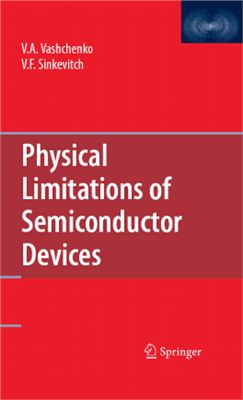Springer Science+Business Media, 2008, 330 pages
Providing an important link between the theoretical knowledge in the field of non-linier physics and practical application problems in microelectronics, the purpose of the book is popularization of the physical approach for reliability assurance. Another unique aspect of the book is the coverage given to the role of local structural defects, their mathematical description, and their impact on the reliability of the semiconductor devices.
Chapter 1 provides an introduction to the most important technological peculiarities of semiconductor devices and basic concepts of reliability related to failure Basic phenomena of thermoelectric instability in semiconductor devices are thoroughly addressed in four following Chapters 2–
5. Only Chapter 6 deals with the most exotic scenario when the degradation leads into catastrophic failure. of robust ESD device design are presented in Chapter
7. The final Chapter 8
the reliability problems.
The book is written to be a helpful source of deep understanding of major physical principles of physical limitation of safe operating area, physical mechanisms and scenario of failures in different application aspects, including device level ESD design. Upon the authors successful industry experience this understanding is dilems, ESD protection and application cases, system level individual reliability provision and many others adjacent areas.
The book is primarily intended for engineers and students working in the field from integrated analog power up to high speed digital design, ESD protection, circle of engineers and researchers in the field of solid-state physics, non-linier physics and could be a very useful material for students in electrical engineering and semiconductor device physics. Finally, due to a universal nature of non-linier this book as a source of rather important knowledge that will help them to address their everyday professional problems on a different level of greater confidence using the physical approach. The regularities outlined in the book are often described by similar equations that are suitable for different application and physical problems in electronics and even chemistry and biology.
problems in electronics and even chemistry and biology.
Many of our colleagues contributed to the material of this book through participation
in discussion, technical and management support it would be difficult to
Preface
physics.
Providing an important link between the theoretical knowledge in the field of non-linier physics and practical application problems in microelectronics, the purpose of the book is popularization of the physical approach for reliability assurance. Another unique aspect of the book is the coverage given to the role of local structural defects, their mathematical description, and their impact on the reliability of the semiconductor devices.
Chapter 1 provides an introduction to the most important technological peculiarities of semiconductor devices and basic concepts of reliability related to failure Basic phenomena of thermoelectric instability in semiconductor devices are thoroughly addressed in four following Chapters 2–
5. Only Chapter 6 deals with the most exotic scenario when the degradation leads into catastrophic failure. of robust ESD device design are presented in Chapter
7. The final Chapter 8
the reliability problems.
The book is written to be a helpful source of deep understanding of major physical principles of physical limitation of safe operating area, physical mechanisms and scenario of failures in different application aspects, including device level ESD design. Upon the authors successful industry experience this understanding is dilems, ESD protection and application cases, system level individual reliability provision and many others adjacent areas.
The book is primarily intended for engineers and students working in the field from integrated analog power up to high speed digital design, ESD protection, circle of engineers and researchers in the field of solid-state physics, non-linier physics and could be a very useful material for students in electrical engineering and semiconductor device physics. Finally, due to a universal nature of non-linier this book as a source of rather important knowledge that will help them to address their everyday professional problems on a different level of greater confidence using the physical approach. The regularities outlined in the book are often described by similar equations that are suitable for different application and physical problems in electronics and even chemistry and biology.
problems in electronics and even chemistry and biology.
Many of our colleagues contributed to the material of this book through participation
in discussion, technical and management support it would be difficult to
Preface
physics.

